Food is scarce for expedition members and indigenous people alike as they make their way up the Columbia River. They stop to hunt and dry meat, and to investigate the Willamette and Sandy rivers. At Celilo Falls, they begin switching canoes for horses and by the time they reach the Walla Walla River, they are ready to take the Travois Trail to the Snake River. While waiting for mountain snows to melt, they encamp with the Nez Perce at present-day Kamiah, Idaho.
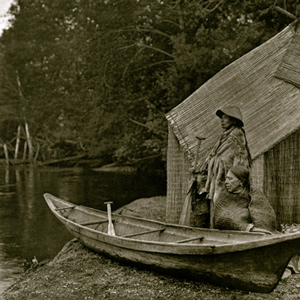

Homeward bound in April 1806, the Lewis and Clark Expedition traveled through the Columbia Gorge and pitched camps on its north side. Their passage was tense and unpleasant, with Indians taking small goods regularly.
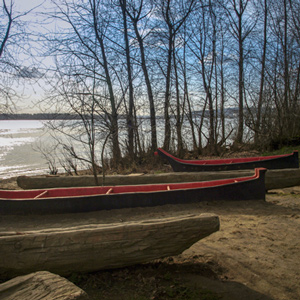

On 23 March 1806, once again battling the rising spring runoff, as it had each of the two previous years on the Missouri, the Corps of Discovery started up the Columbia River towards home.
March 23, 1806
Homeward bound
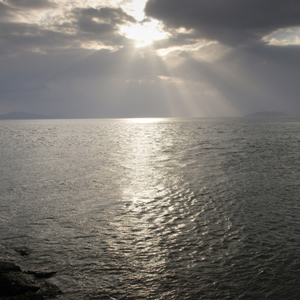

The dugouts are loaded, and they leave Fort Clatsop to begin their homeward-bound journey. Fighting high waves, they round Tongue Point and camp near the John Day River.
March 24, 1806
Stolen canoe claimed
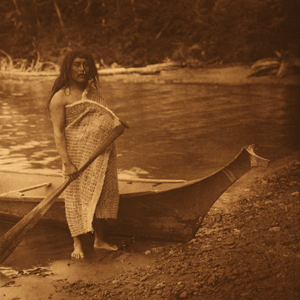

On their way to present Aldrich Point, they cross shallow waters crowded with islands, and a Kathlamet man guides them to the correct channel. The guide claims he is the owner of one of their canoes.
March 29, 1806
Nahpooitle Village


They paddle fifteen miles up the Columbia and encamp near present Ridgefield, Washington. The captains describe the dress, houses, wapato trade, and customs of the Nahpooitle (Cathlapotle) villagers.
March 30, 1806
Prospects for a settlement


As they paddle through an area dense with Multnomah and Watlala villages, they see Cascade Mountain snow peaks, fertile land, and the best prospect for a large settlement west of the Rocky Mountains.
April 1, 1806
Exploring the 'Quicksand' River
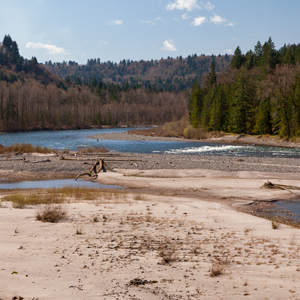

At Provision Camp, Pryor’s detachment explores the Quicksand River—the present Sandy in Oregon. Visiting Indians of various Nations warn of no food upriver, and no salmon for another month.
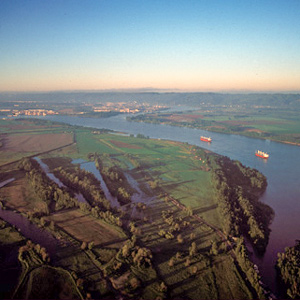

Islands had hidden it from view on the westbound trip, but early on 2 April 1806 some Indians visiting their camp happened to mention it. Clark picked six of his soldiers, hired an Indian guide, and went back to see it.
April 11, 1806
Seaman stolen
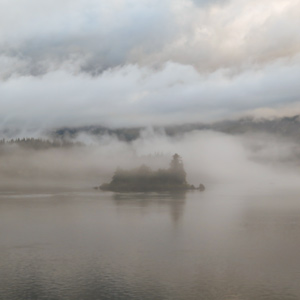

On this wet spring day at the Cascades of the Columbia, the men tow four dugout canoes through the “big Shoote.” Hostilities ensue when a few local Indians start stealing things—even Lewis’s dog Seaman.
April 12, 1806
Lost dugout


Portaging the Cascades of the Columbia, a rope breaks and the largest dugout is lost. The men arm themselves against numerous thieves despite some of the Watlalas condemning their relations who steal.
April 17, 1806
A struggle to buy horses
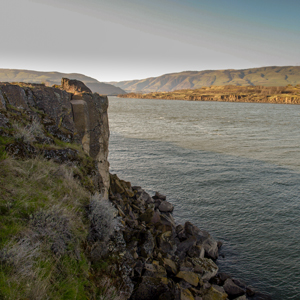

At the Wishram villages on the north side of Celilo Falls, Clark and Charbonneau struggle to buy horses. At Fort Rock, Lewis remarks on the rich verdure and prepares several plant specimens.


Near Wallula Gap, Meriwether Lewis apparently collected an enigmatic and long-missing mineral specimen that was never documented in the expedition journals.
April 30, 1806
Crossing the sandy plain
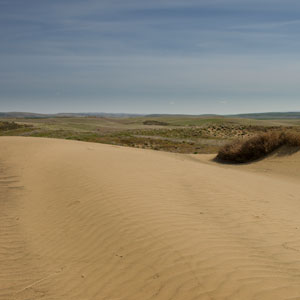

The expedition sets out on the Travois Road passing through sagebrush and sand dunes. They camp on the Touchet River north of present Walla Walla. Lewis describes eating dog, river otter, and horse.
May 3, 1806
The Tucannon crossing
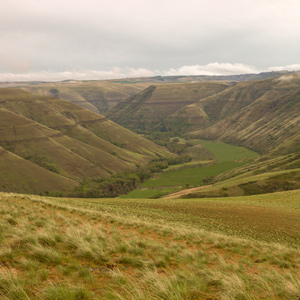

The expedition follows the Travois Road that climbs over high plains intersected by the Tucannon Canyon. They descend to the fertile Pataha Creek valley where they are met by a familiar Nez Perce chief.
May 6, 1806
Three Coeur d'Alenes
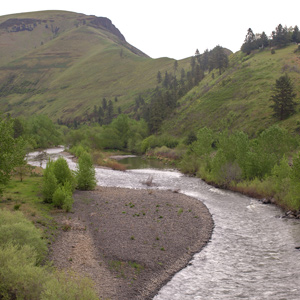

The expedition spends most of the day at the Potlatch River—their Colter’s Creek. Lewis meets three Coeur d’Alene Indians, and Clark gives medical aid. They eventually move to another Nez Perce village.
May 11, 1806
Council at Lawyer Creek
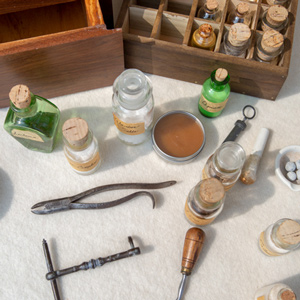

Lawyer Creek near Kamiah, ID With four major Nez Perce chiefs present, the captains continue their council at Lawyer Creek. After that, they demonstrate the air gun and magnets; and provide medical aid to several applicants.
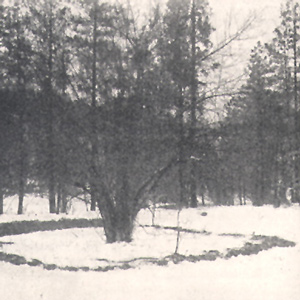

Upon its return from the Pacific coast in the spring of 1806, the expedition camped on the Clearwater River near present-day Kamiah from 14 May 1806 until 10 June 1806, waiting for the snow to melt on the crest of the Bitterroot Mountains.
May 24, 1806
Treating the ill
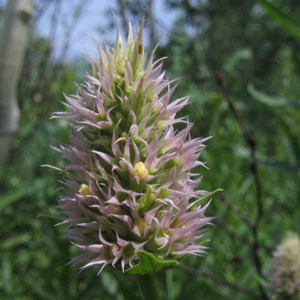

The swelling on young Jean Baptiste’s neck worsens, and Pvt. Bratton is treated with sweats and strong horse mint tea. An old Nez Perce chief—treated a month ago—arrives, and Lewis is at a loss for a cure.
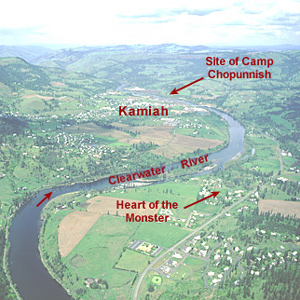

An analysis of Lewis’s celestial observations made during their stay at Long Camp near present-day Kamiah, Idaho.


When the captains saw Nez Perces with several fresh chinook salmon, “fat and fine,” which the Indians said came from “Lewis’s River,” known today as the Salmon River, they dispatched Sgt. John Ordway and two privates to buy some.
Ordway’s Fishing Trip
No mere half day
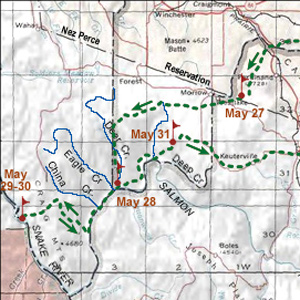

On 27 May 1806, Sergeant John Ordway, accompanied by Privates Frazer and Weiser, left Long Camp under orders to ride over to “the East branch of the Salmon River. The spring run of chinooks had not yet appeared on the Clearwater, so the three were to buy some fresh fish.
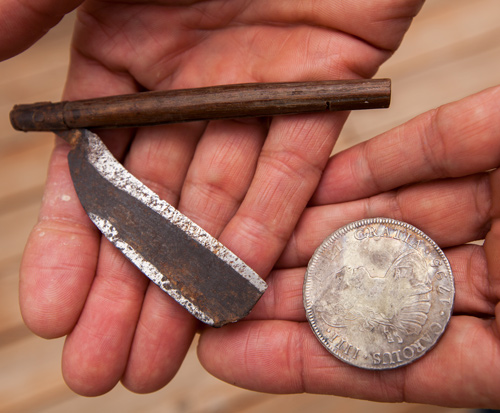
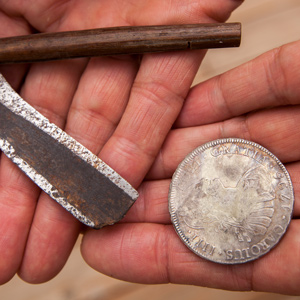
The comments made by Ordway and Gass about Frazer selling his razor for two Spanish dollars can tell us much about the ethno-history of the Lewis and Clark Expedition and the native peoples of the Plateau.
June 8, 1806
Playing prisoner's base
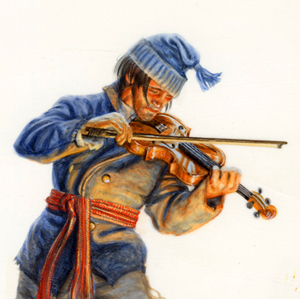

Several Nez Perce people visit, and to get the men in shape, foot races are run, and prisoner’s base is played. The sunken canoe is raised, and three horses are traded. The day ends with dancing.
